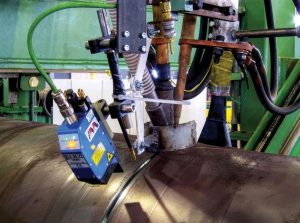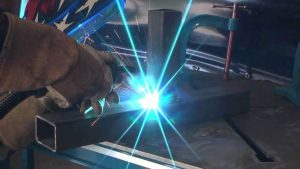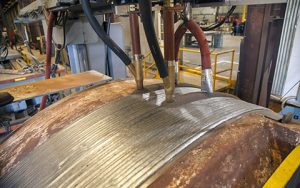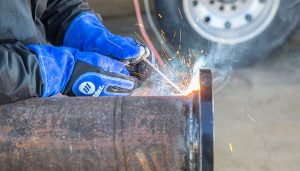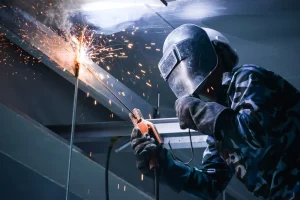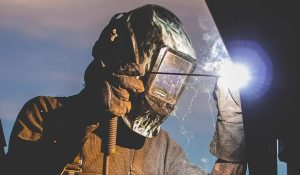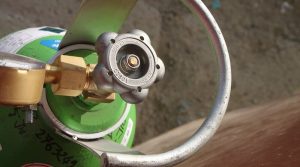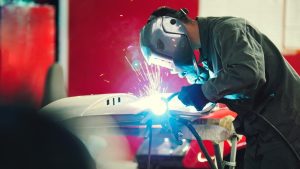Metal fabrication is a complex and rewarding process that requires precision and skill. For those looking to master the art of metal fabrication, these tips can be an invaluable resource. Whether you’re a novice or an experienced fabricator, there’s something here for everyone. From perfecting your practice processes to leveraging leading-edge technology, we’ll cover it all so you can craft with confidence.
From welding wisdom to machining mastery, this guide will provide the essential advice needed to make sure every project yields remarkable results. No matter how daunting the task may seem at first glance, our expert insights will help you get up to speed in no time! With experience comes efficiency – learn how to maximize yours by optimizing each step of the process and getting familiar with cutting-edge tools.
We’ve got plenty more where that came from – buckle up and let’s dive into some serious metal magic! Read on to discover practical pointers that will put you ahead of the game when it comes to fabrication finesse.
Types Of Metal Fabrication
Metal fabrication is a complex process that involves the shaping of metal items and components. Whether you are looking to build something from scratch or make modifications to an existing item, there are various types of metal fabrication services available to help you achieve your desired outcome. From custom sheet metal fabrication to welding projects, these services can provide the tools needed to create beautiful pieces that will last for years.
When it comes to an understanding the different types of metal fabrication processes, it’s essential to know what type of metal materials you’ll be working with. Different metals have other properties and require specific techniques for them to form into shapes and objects. For example, aluminum is much softer than steel and requires special techniques when being cut or bent into shape. It’s also important to consider how the item will be used once it’s been fabricated, as certain metals might not hold up well under extreme temperatures or loads.
Using proper safety protocols while performing any metal fabrication should always be top priority; however, using the right equipment can go a long way in helping ensure successful outcomes during each step of the process. Knowing how to use standard tools such as shears, grinders and drill bits along with specialized machines like plasma cutters and press brakes is essential for producing strong results on any metal welding project or custom sheet metal fabrication job.
With knowledge about suitable materials, safety protocols and proper tool usage, anyone can start their Metal Fabrication journey towards creating unique works of art!
Casting
Casting is one of the most important types of metal fabrication and can be a great way to create parts with repeatable form. It’s an incredibly successful technique that companies have been using for years, allowing them to quickly produce large numbers of components in a short amount of time. Here are some of the basics you need to know about casting:
- Casting Companies – There are many companies available who offer casting services. They should be able to help you design your part from initial shape all the way through to finished cylindrical shape. This allows you to take advantage of their expertise and knowledge so that the process goes smoothly and without issue.
- Casting Process – The basic idea behind the casting process is that molten metal is poured into a mold that cools and solidifies into its final shape. Sand casting is typically used for more oversized items, providing more consistent results than other methods such as die-casting or investment castings. Alternatively, sheet metal can also be formed into complex shapes by pressing it into form while hot or cold.
- Repeatable Form – One of the most significant advantages offered by casting is that it produces parts with very consistent geometry over multiple iterations. This makes it ideal for mass production runs where consistency between components is essential, meaning fewer rejects will occur when producing hundreds or thousands of pieces at once.
So if you’re looking for an efficient way to manufacture multiple copies of identical components, then look no further than casting! With expert advice available from professional companies and reliable processes like sand casting readily available, this could just be what you need to get your project off the ground quickly and easily in no time at all.
Cutting
Cutting metal is like wielding a scalpel, creating custom shapes and designs from plate metal with precision. At the heart of any steel fabrication shop lies an array of powerful tools to get the job done, including miller metals and laser cutting tables that can work around the clock with pinpoint accuracy. But don’t be fooled into thinking it’s all machines – behind every successful cut is an experienced hand guiding the process.
From small scale plate metal up to large components for customer drop shipping, industry veterans know how to make the most out of their equipment and materials. The trick isn’t just about setting up a machine correctly; it’s also about taking time to consider the best way forward in terms of design and workflow efficiency. Metal lathes are extremely versatile when used right, allowing intricate details on complex curves as well as straight lines with ease.
At its core, cutting metal requires both skill and finesse – knowing when to take your time or push ahead with confidence. With practice comes mastery, so don’t be afraid to experiment with different techniques while keeping safety paramount at all times. Keep a steady hand and you’ll soon have custom pieces fit for purpose ready in no time!
Drawing
Drawing is an essential step in metal fabrication. It’s a fundamental process that determines the shape, size and quality of the finished product. At its core, drawing involves creating a blueprint for the shop to follow when constructing products from raw materials like sheet metal or structural steel. Drawing requires attention to detail and an eye for precision – both are key elements in ensuring customer satisfaction with the quality of workmanship.
To do this right, here are some tips you should consider:
1) Stick to exact specifications provided by your customers – nothing can beat precise measurements when it comes to producing high-quality parts; 2) Make sure all drawings are clear and accurate before taking any action on them; 3) Aim for accuracy throughout each stage of production in order to maintain consistent levels of quality across multiple orders.
By following these guidelines, metal fabricators can confidently produce exactly what their customers need while meeting the highest standards for craftsmanship and precision. Knowing how important drawing is for success within a metal fabrication shop will ensure successful projects every time!
Folding
Folding metal is a key part of the metal fabrication industry, used to produce flat sheet metal and metal stampings into custom finished products. It’s been estimated that the folding process accounts for over 25% of all processes in the metal preparation stages – making it an essential skill for any fabricator or custom metal manufacturer. Here are 4 tips on how to make sure your foldings are successful:
Always use high-quality material
When working with metals, you want them to be strong enough so they can withstand multiple bends without breaking. Low-quality materials may save money initially but will cost more in the long run from torn pieces and scrap.
Take care when selecting tools
Different types of metals require different types of tooling equipment such as brake presses, shears and folders. Make sure you have the correct type of tooling available before starting any project.
Don’t forget about safety measures
Many tasks involved with folding carry potential hazards if proper precautions aren’t taken. Be sure to wear appropriate protective gear such as eye protection and gloves while handling sharp edges or hot surfaces.
Practice makes perfect
As with most skills, practice is key when it comes to folding metal correctly and efficiently. By taking time to familiarize yourself with standard procedures, you’ll become better at producing precise folds every time.
Understanding these fundamentals will help ensure success no matter what kind of product or material you’re working with. With careful planning and attention to detail, even complex jobs can be completed quickly by experienced professionals who understand best practices within this specialized field of work.
Extrusion
Extrusion is a powerful metal fabrication method that can help machine shops transform raw materials into custom parts and products. Just like a blacksmith’s forge, it allows customers with metal product needs to bring their visions to life – only this time through the precise manufacturing processes of extrusion.
The focus of steel fabrication via extrusion is on pushing or pulling metals through dies in order to achieve desired shapes. This process relies heavily on force and heat applied in just the right amounts, so as to make sure the material takes shape without losing its structural integrity. It involves intricate calculations by engineers and skilled technicians who are able to determine accurate measurements for each component required for successful fabrications.
At the end of the day, extrusion makes it possible for manufacturers to create complex geometries from even highly ductile metals such as brass and aluminium – something other fabrication methods cannot do as easily. With an expert understanding of all aspects related to metal fabrication, machine shops can leverage this versatile method to provide their customers with high-end, cost-effective solutions tailored specifically according to their requirements.
Machining
Irony alert: who would have guessed that machining— a process of precision and skill — could be so important in metal fabrication? It’s hard to believe, but true all the same.
When it comes to advanced metal fabrication, machine creation of metal structures is essential. Without this capability, creating projects with intricate detail simply wouldn’t be possible. That’s why machining is absolutely vital for any professional-grade fabricator wanting to deliver the highest degree of quality.
The good news is that there are many different types of onmachine tools available to get the job done right. From stationary options like automated lathes and mills to portable machining tools such as orbital cutters and saws, these machines can handle almost anything you throw at them. And thanks to modern CAD capabilities, they’re capable of producing extremely accurate results — even when working with complex shapes or tiny parts!
In short, if you want your next project to stand out from the rest then investing in some high-quality machinery should definitely be part of your plan. With the proper equipment and know-how, you’ll have no trouble turning out incredible works of art time after time — something everyone involved will surely appreciate!
Punching
Punching is a powerful tool in the arsenal of modern metal fabricators, with its capability to provide high-quality results quickly and efficiently. It’s like the hammer of Thor for those who have a subconscious desire for mastery – it can make all sorts of things happen! Punching offers three main benefits when it comes to metal fabrication: variety of tools, finest quality reproduction parts, and application deadlines met.
Using punching as part of your metal fabrication project has a number of advantages. The variety of tools available allows you to create just about any shape or size needed for your project. Allweld Metal Fabrication Inc., for example, uses punch presses that are capable of forming holes from 1/4 inch up to 8 inches in diameter. This means that no matter what kind of design you need created, you’ll be able to find the right tool for the job.
Furthermore, punching yields excellent reproductions parts that are highly accurate and precise. By using a combination of computerized precision machining equipment and specialized dies and punches, modern metal fabricators can produce very close replicas – making it easy to get exact copies made whenever necessary. And finally, by utilizing punching techniques during fabrication projects, you can meet tight application deadlines without sacrificing quality workmanship or accuracy.
In short, punching is an invaluable asset when it comes to creating excellence in any type of metal fabrication job. With its ability to offer variety in terms of tool selection while also offering fine quality reproduction parts along with meeting tight timelines – this technique should always be top on the list!
Shearing
Shearing is a type of metal fabrication that allows us to create finished products from original material. It’s an essential part of the process at Dakota Metal Fabrication, where we use specialized art machinery to cut and shape plate steel into sections for various projects.
The shearing process works by using two blades in order to cut through metal sheets or plates. These blades move in opposite directions, slicing through the piece of metal with great precision and accuracy. With this method, we can quickly produce even cuts on any type of metal, allowing us to fabricate pieces that are uniform and consistent in size and shape.
At Dakota Metal Fabrication, our art machinery gives us the cutting edge when it comes to shearing metals. Our engineers have fine-tuned the equipment so that it delivers perfect results every time – saving us precious time while producing superior quality parts. We’re proud of what we do here: creating custom parts according to your exact specifications!
Stamping
Stamping is an important metal fabrication process that enables a range of overlapping capabilities for creating desired shapes and sizes. Take, for example, one of our customers who had a deadline to complete their application bolt manufacturing project. We utilized our experience in stamping processes combined with tools such as machinery to create the exact shape they required throughout the production run.
The broad capabilities of stamped parts include everything from prototypes to high volume runs. At its core, it’s about taking flat sheet materials and transforming them into complex shapes or forms through cutting and forming operations performed by press machines. A skilled fabricator will understand exactly how much force is needed during each step of the process in order to achieve the results necessary while also avoiding any damage to the material being used.
In addition to cost-effectiveness and efficiency gains from using this type of technology, there are other advantages such as improved accuracy due to automated systems which result in consistent product quality over time regardless of fluctuations in material thickness. This helps optimize customer satisfaction levels, ensuring that applications are completed on time with the expected level of precision and repeatability every time.
Welding
Welding is an essential part of any metal fabrication process, and it’s important to understand the basics if you want superior results. Whether you’re welding a block of metal or creating something out of several common metals, there are some key principles that can help make your finished product exceptional. At RFR Metal Fabrication, we specialize in helping our clients achieve just this – quality welds that stand the test of time.
When working with metal and preparing for welding, knowing how much contact with metal is necessary helps ensure good results. Preparing parts correctly before beginning welding can also prevent costly mistakes due to lack of fitment or stress points created by inaccurate cutting. It’s always best to use fresh material when possible – otherwise the existing material may not be suitable for additional manufacturing processes such as bending or rolling.
The type of equipment used will also play a role in achieving great welds. Using appropriate settings on machines like MIG/MAG (metal inert gas) welders makes all the difference in terms of appearance and strength while ensuring less warping during cooling cycles. Additionally, applying proper techniques such as Tungsten Inert Gas (TIG), Arc Welding and Plasma Cutting ensures better overall performance from your materials during assembly.
At RFR Metal Fabrication, we have decades worth of experience helping customers get exactly what they need when it comes to welding projects. Contact us today to learn more about our services and find out how we can help take your project to the next level!
Choosing Metal Fabricators
Choosing a metal fabricator is an important decision if you want to ensure that your steel fabrication project is successful. With over 5,000 U.S.-based fab shops alone, it can be daunting to understand which one best fits the needs of your commercial machinery or design for manufacturing endeavor. Fortunately, there are key ways to go about finding and selecting the right metal fabricator for any job.
The first step when researching potential contract manufactures should be getting accurate quotes from multiple businesses. Make sure that each quote includes comprehensive line items so as not to face surprises down the road in terms of unexpected costs upon delivery of your finished product. It’s also wise to consider other factors such as turnaround time, scalability, customer service reviews and post-delivery support services that may make all the difference in meeting deadlines and ensuring quality control standards are met.
When choosing between several prospective metal fabricators, ask specific questions about their capabilities; inquire into whether they have experience working with materials similar to yours, what kind of safety protocols do they have in place and how much input on design will be accepted by them? Thinking critically about these details before signing a contract could save you money, time and headaches later on in the process. Additionally, don’t overlook word-of-mouth referrals as well – asking fellow colleagues who have had success using particular contractors might just prove invaluable!
No matter where you start or end up with your research process remember that every detail matters when it comes to producing high-end products through metal fabrication – taking this task seriously upfront will pay dividends down the line!
Custom Metal Fabrication – A Summary
The world of custom metal fabrication is an ever-growing and evolving one. It offers amazing opportunities for customer diversification, education with tool box talks, excellent quality, broad applications and art laser. We can say without any doubt that the focus of steel fabrication has never been so strong as it is today.
Custom metal fabrication provides a unique experience to customers by offering them a range of services like cutting, bending, welding etc., which are designed to meet their specific requirements in terms of size and shape characteristics. Through this process, they are able to get exactly what they need at the right price – all while ensuring that the finished product meets or exceeds industry standards.
From small shops to large corporations, everyone stands to benefit from custom metal fabrications when handled correctly with expert knowledge and skillful craftsmanship. This means taking time out to educate yourself on how best to use each piece of equipment you have available; learning more about different types of technologies used in metal fabrications; understanding how best to finish your project; and above all else paying attention to detail throughout every stage in order to create an end product which will leave your clients delighted.
Cutting Edge Technology For Metal Fabrication
Have you ever wondered how modern manufacturing processes are revolutionizing the industry? From society of manufacturing engineers to common materials and contract solutions, there is an entire world of advanced technology that makes metal fabrication easier than ever.
Cutting edge technology for metal fabrication has enabled many companies to expand their services internationally. With the ability to customize production according to each customer’s needs, these companies can provide a wide range of high-quality products with improved efficiency and accuracy. Contractor supplier compliance management plays an important role in ensuring that all international customers receive quality service.
The use of cutting edge technology in metal fabrication allows manufacturers to streamline the entire process from start to finish. This includes 3D printing, laser cutting machines, robot welding systems and more – all designed to reduce costs while improving product performance and reliability. These advancements have allowed businesses around the world to remain competitive by providing faster turnaround times, better quality control and greater value for money – making them attractive options for both domestic and international customers alike.
Frequently Asked Questions
What Is The Most Cost-Effective Metal Fabrication Process?
When it comes to metal fabrication, there are a lot of variables to consider. Cost is one of the most important factors when deciding what process you should use – but how do you know which will be the most cost-effective? The answer isn’t always clear cut, but with some research and knowledge of your options, you can ensure that you get the best bang for your buck.
The first step in finding an affordable metal fabrication option is understanding what processes are available. Stamping, welding, machining, and casting are all possible methods depending on the material being used. For example, aluminum or steel may require different techniques than softer metals like copper or brass. Each method also has its own advantages and drawbacks in terms of time required and overall cost.
Once you have decided on a suitable process, researching suppliers becomes essential. Quality materials from reliable vendors will help keep costs down while ensuring that your products meet their specifications. Additionally, if multiple projects involve similar parts then batching them together can increase efficiency and reduce labor costs significantly. Finding local solutions such as fabricators or machine shops nearby could also work out cheaper than using international ones if distance permits it.
No matter what type of project you’re undertaking, selecting the right metal fabrication process takes careful consideration and planning. With proper research into available processes and providers, however, any business owner can make sure they’re getting the best value for their money without sacrificing quality standards.
What Are The Benefits Of Custom Metal Fabrication?
Custom metal fabrication offers unparalleled freedom and flexibility, making it a smart choice for many projects. It’s like having the keys to unlock your imagination – you can create almost anything from raw materials with a custom-fabricated solution! Here are just some of the benefits that make custom fabrication such an attractive option:
1) Precision – With modern tools and techniques, fabricators can produce precise parts that meet exacting specifications quickly and efficiently. 2) Variety – From steel to aluminum, stainless steel to titanium, there is no limit to what materials you can use in the fabrication process. This means you can find exactly the right material for any job. 3) Flexibility – Custom fabrication allows complex designs and shapes which are not possible with other manufacturing processes. You can also change design details during production if needed.
The beauty of custom metal fabrication is its versatility; it gives you total control over how your project turns out. Whether you’re building something functional or decorative, custom fabrication makes it easy to get creative while maintaining quality standards and staying within budget constraints. Plus, thanks to advances in technology such as Computer Numerical Control (CNC) machining and 3D printing, creating intricate pieces has never been easier! In short, custom metal fabrication provides all the advantages of traditional manufacturing methods but with greater scope for personalization and precision craftsmanship.
Are Metal Fabrication Services Available Online?
Are metal fabrication services available online? This is an important question to consider when looking for a metal fabricator. In today’s digital world, many customers are turning to the internet for convenience and reliability in their search for professional services.
Online metal fabrication services provide businesses with access to experienced professionals who can help them create custom solutions without having to leave their office or home. Here are 3 advantages of using an online service: • Accessibility – With the click of a button you have access to experts from around the world that can work on your project quickly and efficiently. • Cost-efficiency – Online services tend to be less expensive than traditional methods due to lower overhead costs associated with running an online business. • Quality control – By utilizing expertly trained personnel, you can ensure that your products will meet all safety requirements and regulations as well as look good at the same time.
Using an online metal fabrication service allows businesses to save money while getting quality results faster than ever before. The ability to collaborate with experts remotely also provides customers with more flexibility in terms of scheduling and deadlines. Businesses no longer need to worry about paying travel expenses or taking days off from work just so they can consult with professionals face-to-face.
The answer is yes; high-quality metal fabrication services are now widely available online, offering businesses a convenient way to get exactly what they need without breaking the bank!
How Can Metal Fabrication Help With Sustainability Goals?
Metal fabrication is a powerful tool for sustainability. By using it, companies can mitigate their environmental impact and achieve long-term goals of reducing energy consumption and waste production. As an expert in metal fabrication services, I’m here to tell you how this process can help your business reach its sustainability objectives.
First off, metal fabrication helps reduce the amount of raw materials needed for production processes. This means that fewer resources are used in creating products or components, resulting in fewer emissions during transportation and less pollution from manufacturing activities. Additionally, when done correctly, it also reduces post-production waste by recycling unwanted scrap material into new products or components.
Another great benefit of metal fabrication is that it enables businesses to create more efficient parts with better performance characteristics than those made with traditional methods such as casting or forging. This increases the durability of these components and allows them to last longer before needing replacement. In addition, businesses can often use thinner sheets of metal in their designs since they don’t need to be thick enough to withstand forces generated during processing by more traditional techniques like welding or machining – saving time & money!
The key takeaway here is that there are many ways that metal fabrication can increase efficiency while decreasing energy costs and helping businesses meet their sustainable development goals. Here’s a quick list outlining just some benefits:
- Reduced resource usage
- Increased product durability & longevity
- Ability to use thinner sheet metals
- Reduction in post-production waste
What Safety Precautions Should Be Taken When Working With Metal Fabrication?
Metal fabrication is a valuable technique used to produce metal products such as car parts, cookware and furniture. But it’s important to take safety precautions when working with these materials — failure to do so could result in serious injury or even death. Here are some tips for ensuring your safety while working on metal fabrication projects:
First, always wear protective gear when handling tools that have sharp blades or edges. This includes long sleeves, gloves, goggles and a face shield. You should also make sure you keep the work area clear of any debris that could become a hazard during the process.
Second, be aware of the power tools you’re using — they can cause severe damage if not handled properly. Before beginning your project, inspect all machines for frayed wires or cracked guards; this will help prevent accidents from occurring due to faulty equipment. Additionally, read up on best practices for operating each tool before getting started.
Finally, stay alert at all times and don’t rush through your task. Take regular breaks throughout the day to avoid developing fatigue which can lead to mistakes being made more easily – especially when dealing with heavy machinery like welding torches and grinders. By adhering to these simple guidelines you’ll be able to complete your projects safely and efficiently!
Expert Tip: For successful metal fabrication, high-quality welds come from proper preparation. Before welding, be sure to thoroughly clean and prepare the metal surfaces. Cleaning the surface from any rust, dirt, paint, or other materials is part of this process. Additionally, use a grinder to create a beveled edge on each piece of metal that
Conclusion
Metal fabrication is a complex and versatile process of creating custom metal components. With the right knowledge, resources, processes, and safety precautions in place, any organization can benefit from this cost-effective manufacturing method.
Organizations with sustainability goals must consider how metal fabrication services can help them reach those goals while still maintaining their quality standards. From using recycled materials to minimizing waste through precision cutting techniques, there are many ways that metal fabrication helps organizations go green without compromising on results.
Overall, it’s clear that when done correctly, metal fabrication has the potential to provide immense benefits for businesses looking to reduce costs or become more sustainable. By following these tips and understanding the various aspects involved in the process—including researching online services—organizations will be well on their way to achieving success with metal fabrication projects.
References:
Most Common Metal Fabrication Processes and Applications
The Beginner’s Guide to Welding a Tee Joint (With Tips)
How to Weld Aluminum: The Beginner’s Guide
Originally published at xpressmobilewelding.com
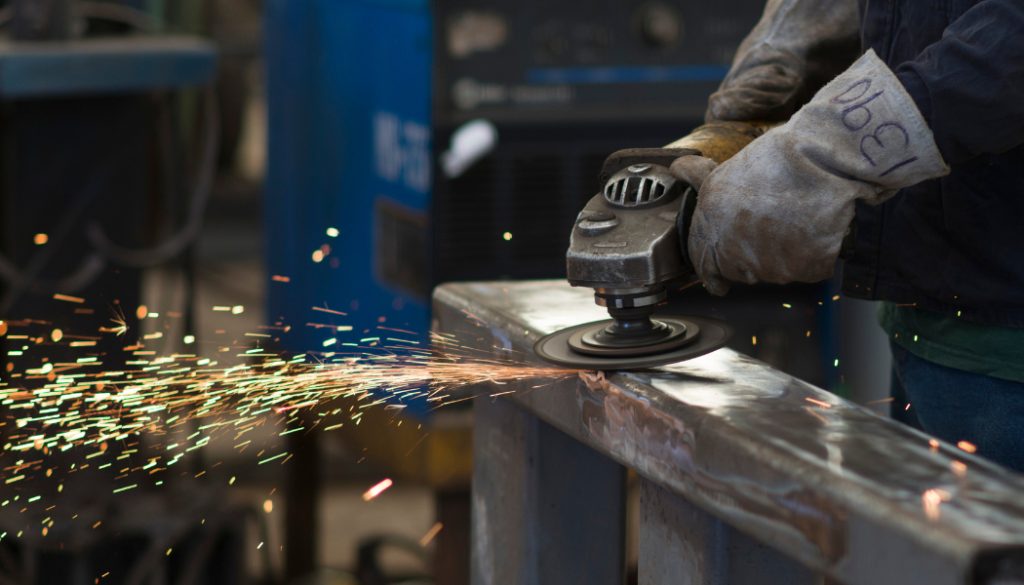
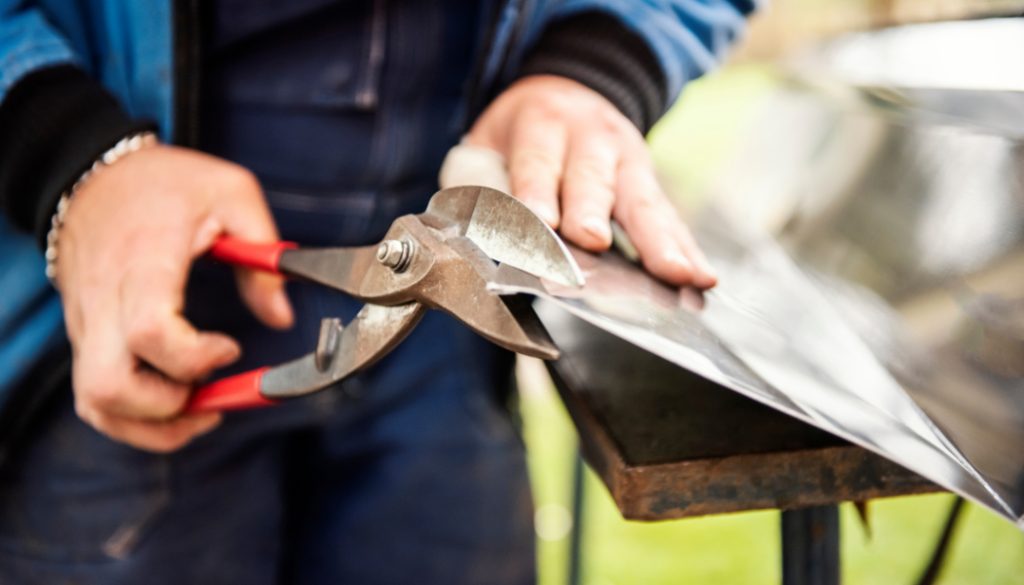
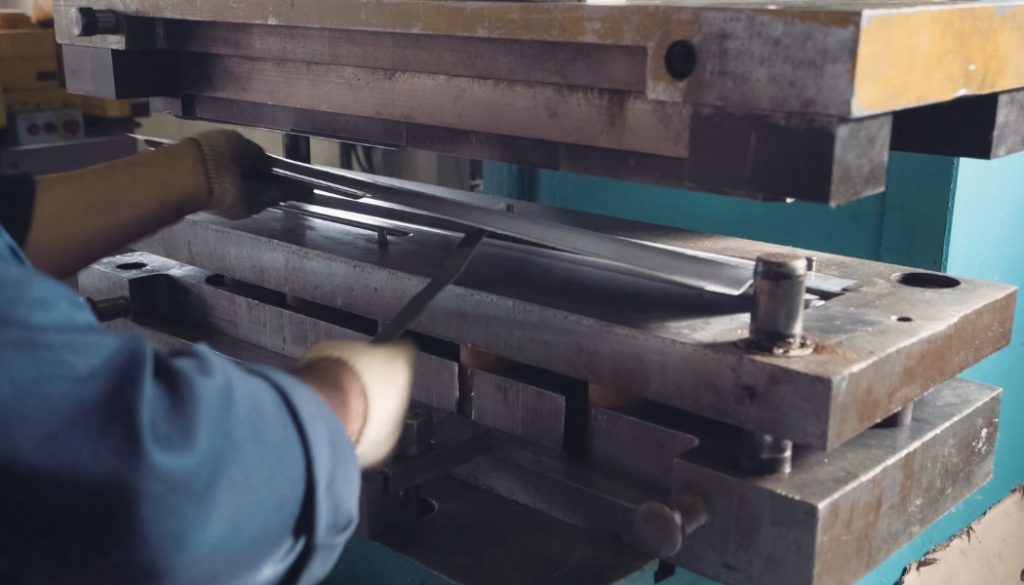
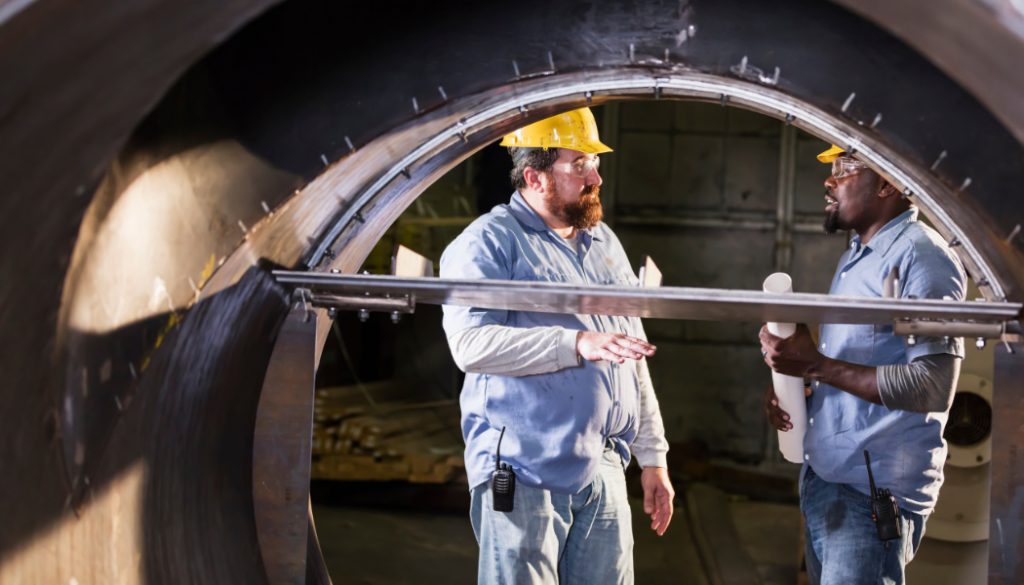
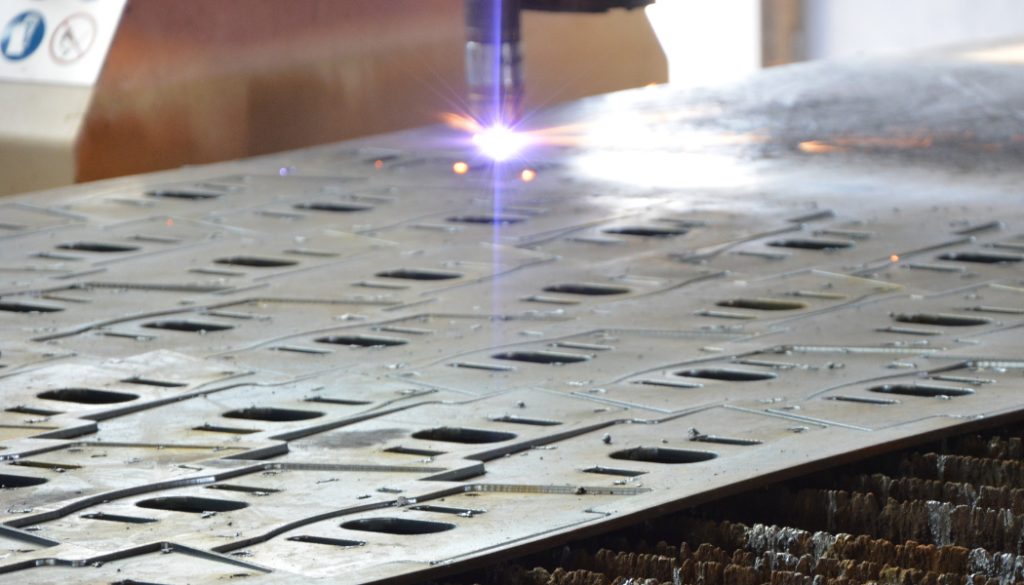
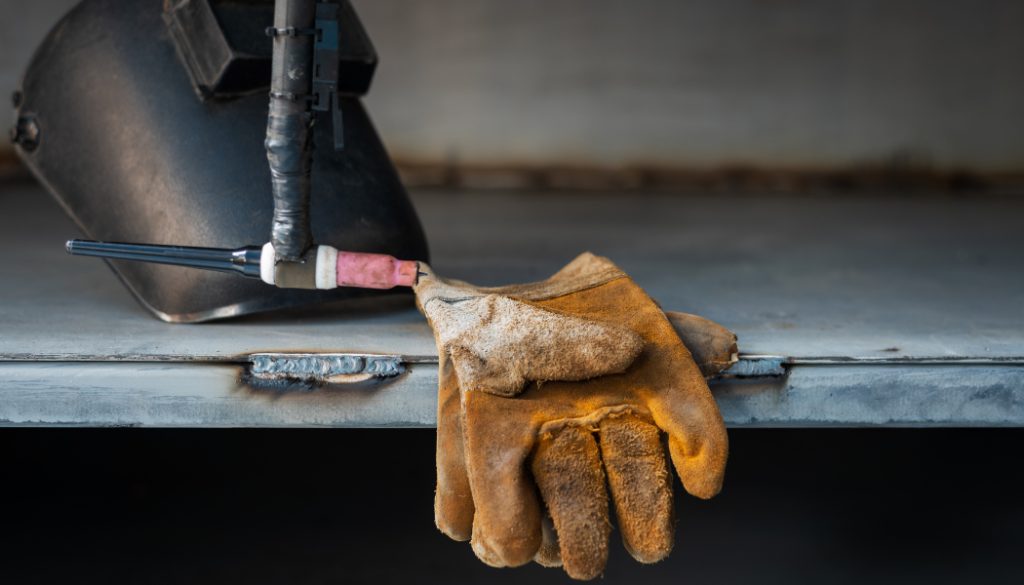
 Is MIG welding stronger than stick weld?
Is MIG welding stronger than stick weld?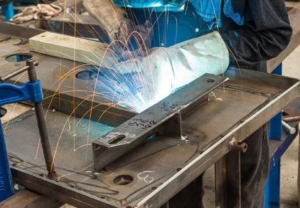 MIG (metal inert gas) welding is a type of arc welding that uses a continuously fed wire. It is well suited for use on thin materials, and can be used on a variety of metals, including aluminum and stainless steel. MIG welding is often used for structural applications such as beams and columns. One advantage of MIG welding is that it can be used on a variety of materials, both thick and thin. This makes it ideal for use in a wide range of applications, including structural ones. Additionally, MIG welding produces very little spatter, allowing for a cleaner weld. And because the operator does not have to stop and change wires as with other types of welding, MIG welding can be faster and more efficient. There are some disadvantages to MIG welding as well. One is that it can be difficult to produce consistent results due to the nature of the process. Additionally, MIG welds are not as strong as some other types of welds, making them less ideal for use in high-stress applications. However, overall MIG welding is a good choice for many applications, especially those where speed and versatility are important considerations.
MIG (metal inert gas) welding is a type of arc welding that uses a continuously fed wire. It is well suited for use on thin materials, and can be used on a variety of metals, including aluminum and stainless steel. MIG welding is often used for structural applications such as beams and columns. One advantage of MIG welding is that it can be used on a variety of materials, both thick and thin. This makes it ideal for use in a wide range of applications, including structural ones. Additionally, MIG welding produces very little spatter, allowing for a cleaner weld. And because the operator does not have to stop and change wires as with other types of welding, MIG welding can be faster and more efficient. There are some disadvantages to MIG welding as well. One is that it can be difficult to produce consistent results due to the nature of the process. Additionally, MIG welds are not as strong as some other types of welds, making them less ideal for use in high-stress applications. However, overall MIG welding is a good choice for many applications, especially those where speed and versatility are important considerations.